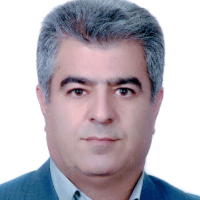Skeletal, microspinifex and harrisite textures in the Upper Paleozoic komatiitic sills and lavas from the Mashhad-Virani Complex, NE Iran
Author(s):
Article Type:
Research/Original Article (دارای رتبه معتبر)
Abstract:
Introduction
The Mashhad- Virani complex has been sandwiched between the collided Lut block and Turan plate. This complex is composed of the following four units: 1) ultramafic-mafic rocks, 2) metamorphosed sedimentary rocks, 3) pyroclastic rocks and 4) Mashhad’s granitoids including quartz-diorite, tonalite, granodiorite and monzogranite (interpreted as granitoids formed in an arc regime during the subduction of the Paleo-Tethys Ocean under the Turan Plate by Karimpour et. al., 2011). The association rocks in the Mashhad-Virani complex have experienced varying degrees of hydrothermal alteration and regional metamorphism. These rocks are typically metamorphosed in lower to upper green-schist facies, but rarely to pyroxene hornfels facies along the contacts with the Mashhad granitoids. Researchers have challenging ideas on the nature of these rocks. Firstly, Majidi (1981) reported the komatiitic nature of these rocks. However, most of the geologists believed that these rocks are a part of an ideal ophiolitic sequence (Alavi, 1979; Fazel-Valipour, 2002). However, some geological studies have provided strong evidence that contradicts the ophiolite nature of these ultramafic- mafic rocks. Detailed studies of this research show that according to the petrological issues, field relationships, textures and internal stratigraphy, these rocks are not only an ophiolitic sequence but are also an ultramafic- mafic volcanics precisely named komatiite. In this complex, although the contact of the ultramafic rocks with the adjacent sediments is not visible in the majority of cases due to the coverage of Quaternary sediments and tectonic processes. However, this contact is partly preserved in the Khurshid Park and Zuh peak where there is some evidence of ultramafic lava eruption on the sediments. In these places, sediments in the border with komatiitic rocks has been clearly baked. They also have very interesting skeletal, microspinifex, and harrisite textures. These observations suggest that the ultramafic rocks in the Mashhad-Virani complex are ultramafic volcanic flows.
Materials and Methods
Field studies have been carried out in more than twenty cross sections in the southwest-northwest of Mashhad. More than 400 thin and polished sections were made from rock samples and studied in the petrography laboratory of the Faculty of Earth Sciences at the Shahrood University of Technology. Moreover, after detailed petrography studies, five samples with the least alteration were selected for preparing polished thin sections. Major element analyses on selected minerals (amphibole, plagioclase, pyroxene and olivine) were performed on a JEOL EPMA JXA-8900R electron microprobe at the Institute of Earth Sciences, Academia Sinica, Taiwan. Analytical conditions included an accelerating voltage of 15 kV, a beam current with 2μm diameter of 12nA and counting times of 10s on peaks and 5s on the background. For calibration of all elements, a set of mineral and synthetic standards has been used.
Discussion
The Mashhad-Virani complex includes an assemblage of ultramafic-mafic rocks with approximate length of 32km along the western side of the city of Mashhad. This complex consists of dunite, ortho- meso and crescumulate (harrisite) wherlite, clinopyroxenite, cumulative and noncumulative amphibole gabbro and differentiated- undifferentiated komatiitic flows. These komatiites have been shown with a wide range of textures such as random acicular pyroxene, hopper and chevron olivine, hopper pyroxene, skeletal olivine, skeletal pyroxene, micrographic intergrowth of plagioclase and clinopyroxene, dendritic pyroxene, olivine harrisitic, olivine orthocumulate, olivine mesocumulate, and olivine adcumulate textures. The rate of cooling and thermal gradient in the volcanic rocks along with super-saturation, exsolution of volatiles and magma mixing in the sub-volcanic rocks are the most important controlling factors in creation of these disequilibrium textures. Amphibole gabbro sills are one of the main magmatic units of the upper parts of the lower horizons in the Mashhad-Virani complex. After detailed petrographical studies, five samples were analyzed for mineral chemistry measurements. In this study, only the composition of clinopyroxenes has been used for thermobarometry studies. Based on the obtained results, the clinopyroxenes are in the range of Ca-Mg-Fe sub-types in the Q-J diagram and in the diopside to augite fields on the Wo-En-Fs ternary diagram (Morimoto et. al., 1988). The results of the thermo-barometeric calculations by single clinopyroxene method indicate mean temperature of 1222°C and pressure of 2.4 kb that are in concord with the dyke and sill forms of gabbroic outcrops and also are very close to the crystallization temperatures of these magma types.
Results
Skeletal, spinifex and harrisite textures are the first unequivocal evidences reported from komatiitic sills and lava flows in the Mashhad-Virani Complex. These rocks are a part of the upper Paleozoic volcano-sedimentary sequence with approximately 32km length with NW-SE trend in the South and Southwest of Mashhad. This complex consists of dunite, ortho- meso and crescumulate (harrisite) wherlite, clinopyroxenite, cumulative and noncumulative amphibole gabbro and differentiated- undifferentiated komatiite flows. Application of the thermobarometry calculations on the single clinopyroxene from the amphibole gabbros (average pressure of 2.4 kb and average temperature of 1222 °C) are highly acceptable and consistent with the field and petrographic evidences.Keywords:
Language:
Persian
Published:
Journal of Economic Geology, Volume:11 Issue: 2, 2019
Pages:
237 to 255
magiran.com/p2017286
دانلود و مطالعه متن این مقاله با یکی از روشهای زیر امکان پذیر است:
اشتراک شخصی
با عضویت و پرداخت آنلاین حق اشتراک یکساله به مبلغ 1,390,000ريال میتوانید 70 عنوان مطلب دانلود کنید!
اشتراک سازمانی
به کتابخانه دانشگاه یا محل کار خود پیشنهاد کنید تا اشتراک سازمانی این پایگاه را برای دسترسی نامحدود همه کاربران به متن مطالب تهیه نمایند!
توجه!
- حق عضویت دریافتی صرف حمایت از نشریات عضو و نگهداری، تکمیل و توسعه مگیران میشود.
- پرداخت حق اشتراک و دانلود مقالات اجازه بازنشر آن در سایر رسانههای چاپی و دیجیتال را به کاربر نمیدهد.
In order to view content subscription is required
Personal subscription
Subscribe magiran.com for 70 € euros via PayPal and download 70 articles during a year.
Organization subscription
Please contact us to subscribe your university or library for unlimited access!




